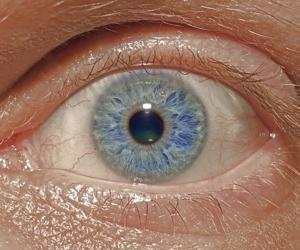How to Prepare for Lasik Eye Surgery
What Needs to Be Done Weeks Prior to Lasik Surgery

Lasik (laser-assisted in situ keratomileusis), commonly referred to as laser eye surgery or laser vision correction, is a revolutionary new technology that corrects distortion in vision using focused laser beams to remove corneal tissue. The reconstruction of the surface of the cornea enables it to receive and transmit light to the retina correctly, and restore normal vision without the aid of glasses or contact lenses. In terms of popularity, Lasik surgery has fast become the number one elective surgical tool for correcting vision-related disorders. But a candidate for Lasik treatment has to be tested and fulfill certain parameters prior to surgery. The patient undergoes an exhaustive screening process, and must also observe certain precautions before the eye comes under the laser beam.
Precautions to observe before undergoing Lasik eye surgery
1. Discarding contact lenses
The Lasik candidate will be encouraged to dispense with contact lenses at least two weeks prior to the surgery. Contact lenses tend to reshape the corneal surface with extended use, and doing away with the lenses and using regular glasses instead is part of the strategy for restoring the corneal surfaces to their normal shape before surgery. This is crucial because accurate measurements and computerized mapping of the corneal surface can only be done on a normal-shaped eye to determine the precise points that demand laser-assisted tissue removal. Unless the corneal surface regains its normal shape, it becomes difficult to pinpoint how much tissue needs to be removed to correct refractive errors. People on rigid gas permeable (RGP) lenses may require at least three weeks' substitution with regular glasses before they come in for computerized evaluation.
2. Avoiding eye makeup
For at least 24 hours prior to surgery and on the day of the surgery, you will be advised to abstain from applying eye makeup such as mascara, eye shadow, eye liner, and kohl, and to desist from using hair care products and facial cosmetics that contain perfumes and alcohol which irritate the eyes. The idea is to eliminate the risk of eye infection and stave off inflammation during and after surgery. You may be advised to use a mild soap solution for cleaning the face, and gently brush away accumulated dirt to keep the eyelashes clean.
3. Taking care of transportation, to and from home and office
The doctor may prescribe eye medication and mild sedatives prior to the surgery. This may result in slight visual disorientation and an inability to concentrate. Driving will be affected on the days leading up to the surgery as well as for a couple of days following the surgery, so you need to arrange for a friend or family member to drive you to the clinic and back home. Your period of temporary eye discomfort and vision distortion prevents you from working, so the office needs to be informed in advance about your period of absence from work. At home, family members will have to be co-opted to pitch in to help with the chores till your vision normalizes.
4. Nixing cigarettes and alcohol
At least 24 hours prior to surgery, tobacco and alcohol need to be completely avoided as they tend to irritate and dehydrate the eyes. If you are suffering from dry eyes (insufficient tear formation) you may be prescribed medication to rectify the problem before the surgery. There are no restrictions on one's food intake, but it helps to opt for a diet that is rich in fruit, nuts, vegetables, and fiber.
5. Reconsidering your motivation for surgery
Before submitting to Lasik surgery, discuss the issues, risks, and outcome in detail with family, friends, and the eye specialist. If necessary, seek a second or third opinion. It also helps to discuss the pros and cons of the surgery with persons you know who have already undergone surgery, to receive tips and gain valuable insights from them.
6. Doing a cost-benefit analysis of Lasik surgery
This is also the right moment for evaluating the costs of Lasik surgery and whether there are cheaper alternatives that do not involve invasive, high-risk procedures. The fact that Lasik is an elective surgery rules out insurance payouts at least for the more advanced (and expensive) surgeries. Check with insurance providers to ascertain whether the FDA-approved relatively inexpensive surgeries are covered and, if they are, to what extent. If insurance is not financing the costs, you may want to consider withdrawing from tax-saving Flexible Spending Accounts or FSAs that permit Lasik expenses.
Preparing for a detailed eye evaluation
This is the stage where your eyes are evaluated clinically to ascertain whether you are a proper candidate for Lasik eye surgery. The doctor will want to know all about your existing medical conditions, detailed medical history, and record of surgeries performed on you in the past. This is something like an elimination round because if you have preexisting illnesses and are taking medication that disturbs vision or interferes with eye healing, surgery might not be recommended. Usually, patients who are infected with HIV or have diabetes, rheumatoid arthritis, or autoimmune disorders are cautioned to postpone eye surgery to avoid post-surgical complications. You have to alert the doctor to medications that you are consuming to crosscheck for possible side effects that may disturb or have the potential to affect normal vision.
The computerized eye evaluation will check for eye abnormalities and existing or undetected corneal irregularities that may trouble you when you undergo surgery. You will also be examined for excessive dryness of the eyes or enlarged eye pupils or excessive pressure buildup that may require postponement of surgery till the condition normalizes. In highly customizable Wavefront-guided Lasik procedures, a 3D computer mapping of the eye enables the surgeon to correctly measure the contours of the cornea and determine the amount of tissue that can be safely removed for reshaping the cornea. The coordinates of tissue removal points are programmed into the computer to assist the excimer laser in removing corneal layers with a near-zero margin of error.
Preparing yourself for Lasik eye surgery
Prolonged hospitalization is normally avoided and the surgery is done in an outpatient setting marked by an ambiance of speed and clinical efficiency. You will be resting in a reclining position on an excimer laser unit. A topical anesthetic will be administered to numb the eye and freeze the eye muscles, especially the iris. A device called a speculum will be used to pry the eyelids open and prevent you from blinking during surgery. Next, a suction ring is used to raise the cornea and flatten it to provide an even surface for performing surgery. A very fine microkeratome blade is then used to slice the top epithelial layer of the cornea, which is moved aside like a hinged flap. This exposes the underlying stroma, the tissue of the cornea, parts of which are preprogrammed into the computer for laser-assisted removal.
The last word
Lasik eye surgery is not for everybody and one cannot walk into a hospital and simply choose to undergo the surgery. You need to fulfill certain eligibility norms and be in reasonably good bodily health (this includes your eyes), with nearsightedness, farsightedness, or astigmatism that is within a prescribed band of refractive error. Your will be clinically evaluated to judge your suitability for the operation. You will also be counseled regarding the risks, benefits, and alternatives so that you make an informed decision, fully aware of what the operation entails.











